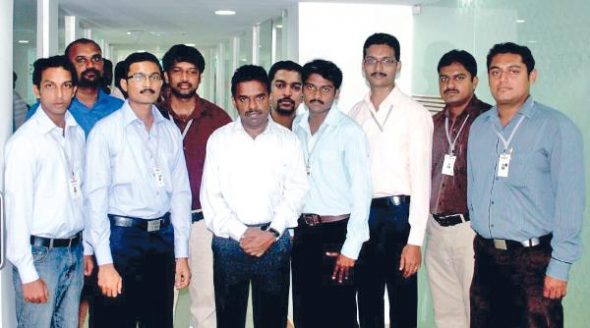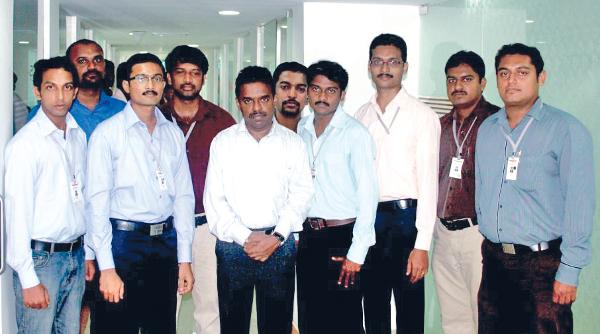
OrisysIndia is an incubatee firm at Trivandrum’s Technopark, and is into providing IT consultancy and solutions related to domains such as Web applications, website design and development, e-commerce services, telephony solutions, and many others. You may well wonder what’s new about it since there is no dearth of IT consultants and solutions providers in the market.
What makes Orisys an interesting case to evaluate is the fact that the company has been able to create a niche for itself by developing a sophisticated yet drastically low-cost communications solution for call centres, by leveraging Asterisk, a free and open source software that transforms a computer into a communications server.
Telephony solution with a difference
Arun Raj, CEO, OrisysIndia, shares more details about the Asterisk telephony solution, which he believes is revolutionary in many ways: “One of our clients (name kept anonymous on request) is running a call centre with 10 telecallers. The firm was using a typical PBX box and commonly-used analogue phones. The traffic mainly related to outbound calls, with an average of 60 to 65 calls per user, per day.
“This proved very cumbersome, as it included a process of dialling numbers and then manually posting call feedback entries and sorting data. Replacing this, we have now implemented a CRM-integrated Asterisk-based customer care solution. Asterisk provides a complete set of tools that can be used to route calls, set up a conference bridge, VoIP gateway, IVR system, etc. It is one of the most powerful platforms, which offers full voice call control to programmers.
“If you use conventional PBX hardware like what is provided by vendors like Cisco and Avaya, it costs approximately Rs 20-30 lakhs. But our solution costs around Rs 2-5 lakhs, depending upon the nature of the complete solution required by a customer, which may involve CRM integration, developing the IVR tree, solution customisation, and so on. I think this solution has the potential to trigger a revolution in the telecom industry.”
In the new system, calls are initiated from the computer itself at a single mouse click. “The productivity of agents has increased to 125 to 135 calls per day, which is double their earlier daily average. The process of data sorting and reports generation, too, has been automated,” he adds.

Apart from developing Asterisk-based telephony solutions, the company works extensively on a number of open technology platforms, frameworks and libraries such as PHP, CodeIgniter, Symfony, Zend, MySQL, Drupal, Magento WordPress, Joomla, jQuery, and so on, to suit the other specific needs of its clients.
Switching to the OSS stack
During the initial stages of their firm’s journey, the company also faced a resource crunch. It had neither an office, nor enough money to set up the infrastructure to build solutions. The company started out with virtually zero investment.
| The startup story |
| The seeds for the firm were sown in 2008, when the company’s founding members, who were mostly independent freelancers simultaneously pursuing their studies in college, came together and pooled their resources for a common project that aimed at providing cost-effective IT solutions to firms.
Raj recapitulates: “After our initial monetary success, we decided to continue this collaborative pursuit within the framework of an organisation. Hence, OrisysIndia was incorporated in 2009 as a limited-liability partnership firm.” Initially, Orisys was a three-member team, comprising Arun Raj (CEO, OrisysIndia), Amrutha Raj (creative head) and Manodh Mohan (chief marketing officer). They were later joined by Joseph Alexander (project manager). |
It was during this phase that the Orisys team members spotted a few big projects, for which they believed they had the expertise to build a solution. Interestingly, they also discovered that some of the solution providers who had pitched for the projects had given very high cost estimates.
Hence, prior to coming up with an offer, the team did a little research into the offerings of the different vendors and found that most of the solutions were priced so high because they were built on proprietary licensed technologies.
“While there wasn’t a conscious effort put into building Orisys as an open source solutions provider, it so happened that in the pursuit of building a firm that provides the most apt solutions at the most competitive price, the company realised that OSS fitted the bill, perfectly. It hence became the business strategy of Orisys to leverage the open source stack and provide turnkey end-to-end solutions with long maintenance contracts, so that customers are no longer worried about the support services for the solutions rendered to them,” avers Raj.
The business took a leap forward when the team began building solutions using all its OSS knowledge resources. Success followed sooner than expected, thereafter.
The ‘open’ strategy that worked
Working with OSS proved to be a huge advantage for Orisys. Raj adds: “Our client base has increased phenomenally, as we have been successful in building a cost-effective open source solutions portfolio. This has been the core reason for our business’ growth.”
Today, the company has many prestigious clients. It provides technology support to ICFOSS (International Centre for Free and Open Source Software), Government of Kerala. It also provides specialised services to companies and NGOs like Make A Difference (M.A.D.) and Mirakle.
The Orisys team vouches for the usefulness of the OSS stack to bootstrap IT businesses, especially start-ups. Raj reasons: “The start-ups get access to the entire source code from the OSS community, and can customise those features with respect to the requirements of different clients. If we start from scratch, we may not be able to complete the project in time. However, using OSS, we are able to deliver solutions to clients in time.
“Apart from this, open source tools and development kits are easy to customise, and there is a very large community behind these projects, which is always a great help if you get stuck during the process of product development.”
What’s in the offing?
Orisys is planning to expand its operations by setting up an office in the US. The company also plans to hire 200 employees in the next fiscal year, of which 70 per cent would be OSS professionals. Currently, Orisys is a nine-member team, seven of whom are OSS professionals, whom the company has roped in from events such as tech meets and bar camps. Raj feels that barcampkerala.org is one of the perfect head-hunting grounds for OSS professionals.
On the solutions improvisation and innovation front, Orisys is currently doing research on building a 3G video gateway to facilitate video calls, video broadcasting, and interactive video and voice-response systems. Raj divulges more details: “3G video calls are new to the market, and such value-added services can play a key role in the telecom sector. Some of the application areas include on-demand video streaming channels, live cricket broadcasts, access to on-the-go healthcare facilities, Interactive Voice and Video Response (IVVR) for product demos and online support, etc.”
Orisys owes a lot of its success to open source, and contrary to popular perception, Raj feels it is easy to make money through OSS. To young OSS professionals who have a business idea up their sleeves, he suggests: “Make a product with a good GUI and navigation features. Approach a problem with a solution; resolve it in your mind first, interact and collaborate with the open source community, then choose the right tools from the open source stack and you will be amazed to see the results.” And we concur!









































































Joseph Alexander guy standing 2nd from right
good going
Good Going !